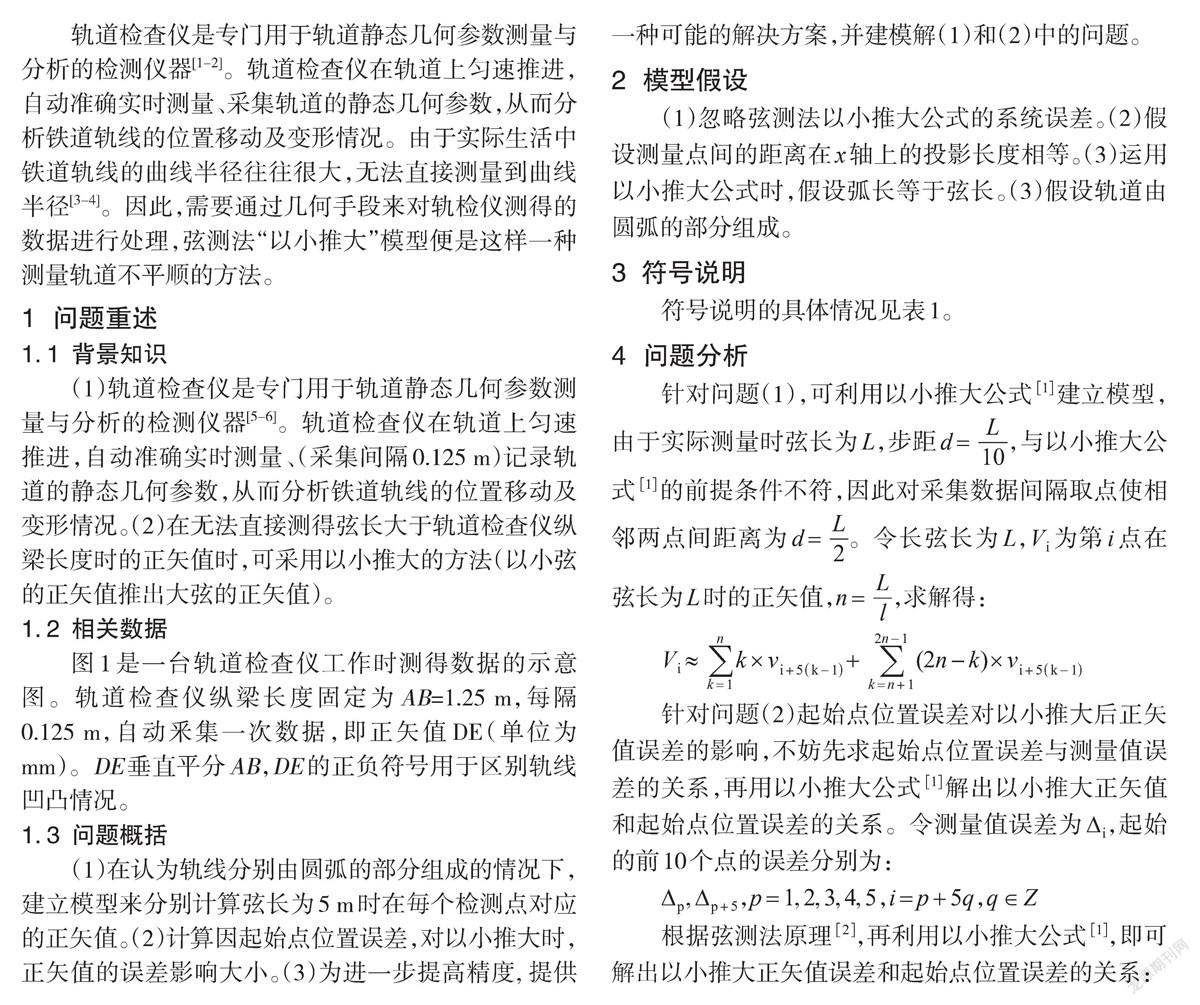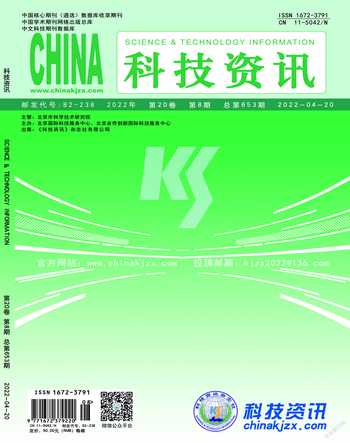轨检仪弦测法“以小推大”相对检测数学模型研究




DOI:10.16661/j.cnki.1672-3791.2112-5042-3862
摘 要:弦测法“以小推大”是测量轨道不平顺的方法,该文运用它的数学原理,对轨道检查仪的相对检测的实际问题进行建模研究,并使用最小二乘法,對弦长大于轨道检查仪纵梁长度时的正矢值进行求解。考虑到实际测量值步距与弦长比值小于以小推大公式中步距与弦长比值,对实际测量值间隔取点,利用弦测法原理,建立了以小推大正矢值误差和起始点位置误差关系的模型,进一步得到优化后的相对检测模型。
关键词:以小推大 间隔取点 弦测法原理 最小二乘法
中图分类号:U216 文献标识码:A 文章编号:1672-3791(2022)04(b)-0000-00
Research on the Relative Detection Mathematical Model of "Pushing the Big with the Small" in the Chord Measurement Method of Track Detector
YANG Xinyue
(Southwest Jiaotong University, Chengdu,Sichuan Province,611756 China)
Abstract: The chord measurement method "pushing the big with the small" is a method to measure the track irregularity. This paper uses its mathematical principle to model and study the practical problem of relative detection of track inspection instrument, and uses the least square method to solve the positive vector value when the chord length is greater than the longitudinal beam length of track inspection instrument. Considering that the ratio of step length to chord length of the actual measured value is less than the ratio of step length to chord length in the formula of pushing up with small, take points for the interval of the actual measured value, and establish the model of pushing up with small. Based on the principle of chord measurement method, the model of the relationship between the starting point position error and the measured value error is established, and the model of the relationship between the small positive vector error and the starting point position error is further established. The model is expressed in the form of matrix vector, the residual square sum function is introduced, and the optimized relative detection model is further obtained by curve fitting with the least square method.
Key Words: Pushing the big with the small; Interval sampling; Principle of chord measurement; Least square method
轨道检查仪是专门用于轨道静态几何参数测量与分析的检测仪器。轨道检查仪在轨道上匀速推进,自动准确实时测量、采集轨道的静态几何参数,从而分析铁道轨线的位置移动及变形情况。由于实际生活中铁道轨线的曲线半径往往很大,无法直接测量到曲线半径。因此,需要通过几何手段来对轨检仪测得的数据进行处理,弦测法“以小推大”模型便是这样一种测量轨道不平顺的方法。
1问题重述
1.1背景知识
(1)轨道检查仪是专门用于轨道静态几何参数测量与分析的检测仪器。轨道检查仪在轨道上匀速推进,自动准确实时测量、(采集间隔0.125 m)记录轨道的静态几何参数,从而分析铁道轨线的位置移动及变形情况。
(2)在无法直接测得弦长大于轨道检查仪纵梁长度时的正矢值时,可采用以小推大的方法(以小弦的正矢值推出大弦的正矢值)。
1.2相关数据
图1是一台轨道检查仪工作时测得数据的示意图(见图1)。轨道检查仪纵梁长度固定为AB=1.25m,每隔0.125 m,自动釆集一次数据,即正矢值DE(单位为mm)。DE垂直平分AB,DE的正负符号用于区别轨线凹凸情况。
1.3问题概括
(1)在认为轨线分别由圆弧的部分组成的情况下,建立模型来分别计算弦长为5 m时在毎个检测点对应的正矢值。
(2)计算因起始点位置误差,对以小推大时,正矢值的误差影响大小。
(3)为进一步提高精度, 提供一种可能的解决方案,并建模解(1)和(2)中的问题。
2 模型假设
3 符号说明
4 问题分析
5 模型的建立
5.1以小推大公式的原理
5.2以小推大模型的建立
5.3以小推大公式的系统误差
5.4弦测法原理
5.5起始点位置误差与测量值误差的关系
5.6以小推大后正矢值误差与起始点位置误差的关系
5.7最小二乘法提高模型精度
由5.6可知以小推大后的正矢值误差与起始点位置误差的关系为:
6 模型的评价,改进与推广
6.1模型优点
该文建立的模型与实际紧密联系,充分考虑了起始点位置误差对以小推大正矢值誤差的影响,并且对模型使用最小二乘法进行了优化,使模型更加贴近现实。
6.2模型缺点
(1)以小推大模型具有一定的系统误差。(2)在起始点和末尾处,不能准确计算出以小推大的正矢值。(3)不能应用于步距大于短弦长一半和短弦长与步距不成整数比的情况。
6.3模型推广
以小推大模型不仅能运用于轨道检测,在生活中的其他方面,也有许多仪器不能直接测出所需数据的情况,比如对桥梁工程的变形监测,这时便也可以运用以小推大的模型,并且用最小二乘法减小误差。
参考文献
[1] 胡哨刚,孔祥芳,叶海波,等.轨道不平顺的评价检测及噪声处理方法[J].交通科技与经 济,2021,23(6):58-63.
[2] 张志川.轨道刚度对动态检测数据的影响[D].北京:中国铁道科学研究院,2021.
[3] 付宏贵.基于轨检车数据的汉丹线大机捣固作业优化研究[D].北京:中国铁道科学研究院,2021.
[4] 方飞.客货共线铁路平面线形重构研究[D].兰州:兰州交通大学,2021.
[5] 李亚宁. 基于数据融合技术的电气火灾探测系统关键技术研究[D].株洲:湖南工业大学,2021.
[6] 马文,田园.基于聚类方法的工业电气设备大数据特征识别[J].计算机技术与发展,2020,30(11):190-194.
作者简介:杨昕玥(2001—),女,本科在读,研究方向为统计学。

